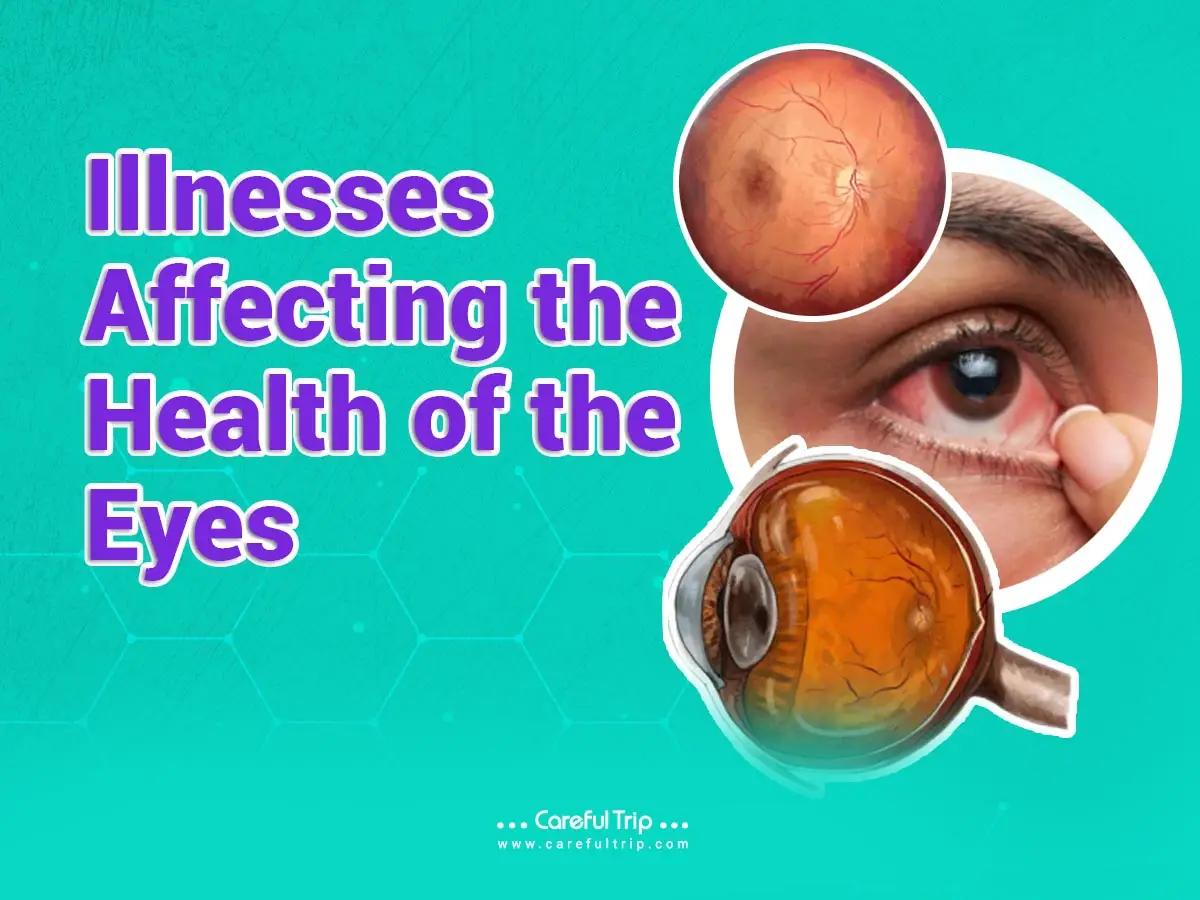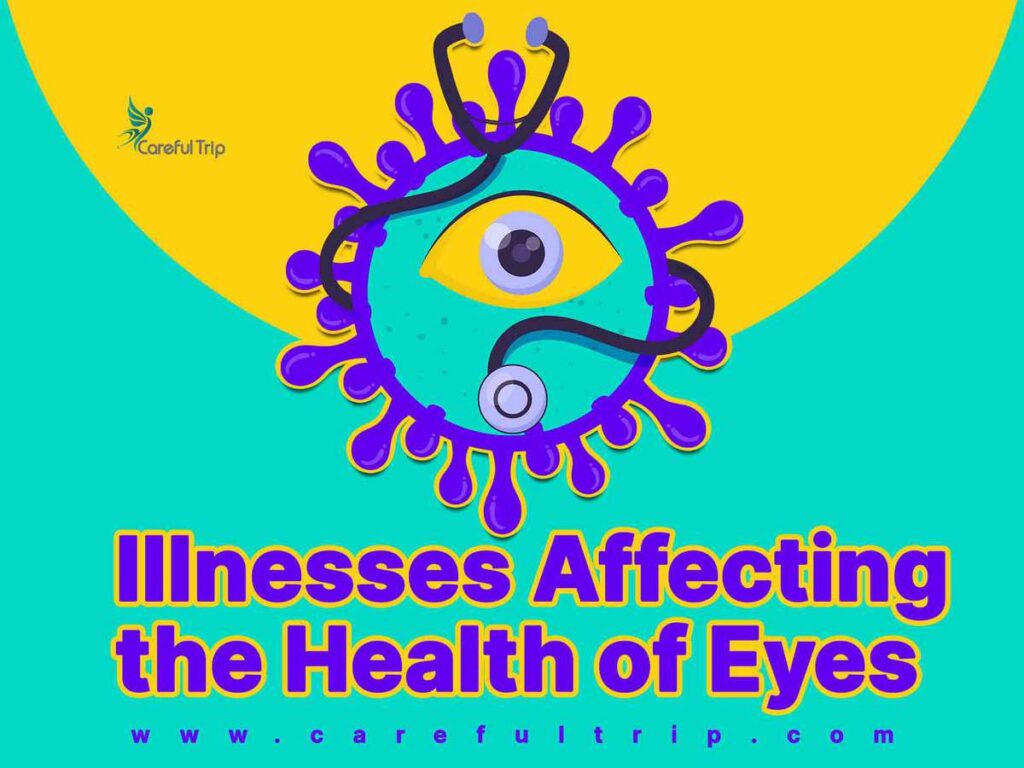
The eye is a vital organ that not only allows us to experience the beauty of our surroundings but also provides approximately 80% of the sensory information we use to interact with the world. Often described as the “windows to the soul,” our eyes play a critical role in our quality of life. In 2025, eye diseases remain a significant public health issue, especially in developing and emerging economies, where factors like unhealthy nutrition, increased screen time, and air pollution elevate the risks.
The intricate process of vision involves not only the specialized structures of the eye but also extensive processing in various brain centers. As a result, even minor visual impairments can profoundly affect daily life and limit opportunities. Below, we take a look at several key eye conditions, updated for the latest standards in 2025.
Diabetic Retinopathy
Diabetic retinopathy remains one of the most common and serious complications of diabetes—a chronic metabolic disorder characterized by elevated blood sugar levels. It is the leading cause of sudden vision loss among adults aged 20 to 74. In diabetic retinopathy, prolonged hyperglycemia damages the delicate blood vessels of the retina—the light-sensitive layer at the back of the eye—leading to leakage, swelling, and, eventually, vision impairment.
Pathogenesis & Symptoms:
- Mechanism: Chronic high blood sugar compromises the blood-retinal barrier, allowing plasma leakage into the retinal tissue. Over time, damaged vessels may hemorrhage or form abnormal new vessels.
- Symptoms:
- Floaters or dark spots in vision
- Blurry or fluctuating vision
- Dark or empty areas in the visual field
- Progressive vision loss
For more information, read:
Prevention & Management:
Regular comprehensive eye examinations with dilation are essential—especially for individuals with diabetes, high blood pressure, or elevated cholesterol. Modern management in 2025 includes lifestyle modifications, strict blood sugar control, and advanced treatments such as intravitreal anti-VEGF injections, laser photocoagulation, and, in advanced cases, vitrectomy.
Age-Related Macular Degeneration (AMD)
AMD is one of the leading causes of severe vision loss in older adults. It primarily affects the macula, the central part of the retina responsible for sharp, central vision.
Types & Symptoms:
- Dry (Atrophic) AMD: Characterized by gradual thinning of the macula, leading to slow and progressive loss of central vision.
- Wet (Exudative) AMD: Occurs when abnormal blood vessels beneath the macula leak fluid, causing rapid vision changes.
- Common Symptoms:
- Distorted or blurred central vision
- Wavy or crooked appearance of straight lines
- Difficulty in recognizing colors
- A dark or empty area in the center of vision
Advancements in anti-VEGF therapies and ongoing research into gene-based treatments continue to improve outcomes for patients with AMD.

Presbyopia and Age-Related Hyperopia
Presbyopia is an age-related condition in which the eye’s lens loses elasticity, making it difficult to focus on close objects. While hyperopia (farsightedness) is often present from birth, presbyopia typically manifests after age 40.
Symptoms:
- Blurry near vision
- Eyestrain and headaches during reading or screen work
- Difficulty in performing detailed tasks
Treatments:
Modern management options in 2025 include:
- Glasses and Contact Lenses: Bifocals, progressive lenses, or multifocal contact lenses.
- Surgical Options:
- Lens implantation with intraocular lenses (IOLs) that restore focusing ability
- Conductive keratoplasty using radiofrequency energy to reshape the cornea
- LASIK procedures tailored for monovision correction
For more information, read:
Eyes on Perfection: Advancements in Eye Surgery and Vision Correction
Hypertensive Retinopathy
High blood pressure can damage the delicate retinal blood vessels, leading to hypertensive retinopathy—a condition that may cause gradual vision deterioration if not managed effectively.
Mechanism & Manifestations:
- Mechanism: Chronic hypertension leads to narrowing and structural changes in retinal arterioles, sometimes resulting in microaneurysms, hemorrhages, hard exudates, or even swelling of the optic disc (papilledema).
- Implications: In severe cases, irreversible vision loss can occur, particularly if blood flow is compromised for extended periods.
Management:
Effective blood pressure control, metabolic therapy, and regular ophthalmologic evaluations are key strategies for preventing the progression of hypertensive retinopathy.
Glomerulonephritis-Related Retinopathy
Glomerulonephritis, an inflammation of the kidneys, can affect the eyes by altering metabolic processes and causing distinctive retinal deposits—often described as a “starry sky” appearance. These deposits may lead to the death of retinal nerve cells and subsequent visual field loss.
Significance:
Early detection and management of kidney disease can help prevent ocular complications. Patients with renal conditions should have regular eye examinations.
Autoimmune Thyroiditis and Thyroid Eye Disease
Diseases like Autoimmune thyroiditis, such as Hashimoto’s thyroiditis, can lead to thyroid eye disease, characterized by inflammation and swelling of the tissues behind the eyes. This can result in proptosis (bulging eyes), eyelid retraction, and, in severe cases, optic nerve compression.
Symptoms & Management:
- Symptoms:
- Reduced blink rate and dry eyes
- A noticeable “scleral show” (the white of the eye becomes more visible)
- Diplopia or double vision
- Treatment: May include corticosteroids, immunomodulatory therapies, or surgical intervention in advanced cases.
Retinitis Pigmentosa
The Retinitis pigmentosa (RP) is an inherited, degenerative retinal disorder leading to progressive vision loss and blindness. The disease affects the photoreceptors (rods and cones) and retinal pigment epithelium (RPE).
Symptoms:
- Gradual loss of peripheral vision (tunnel vision)
- Night blindness (nyctalopia)
- Difficulty adapting between light and dark environments
Current Developments:
While no cure currently exists, advances in gene therapy and retinal implant technology in 2025 offer hope for slowing disease progression and improving quality of life.
Eye Injuries
Traumatic eye injuries—ranging from ocular strokes and chemical exposures to blunt trauma from accidents—can cause significant and sometimes permanent vision loss.
Prevention & Management:
- Prevention: Use of personal protective equipment (PPE) in hazardous environments is crucial.
- Immediate Care: Prompt medical evaluation and treatment are essential to mitigate damage and improve outcomes.
“An estimated 20.5 million (17.2%) Americans aged 40 years and older have cataract in one or both eyes, and 6.1 million (5.1%) have had their lens removed by surgery, “ – CDC
Advanced Eye Care in Iran: Contact CarefulTrip
For all your eye-related rnational patients. By connecting you with leading ophthalmic specialists and coordinating every aspect of your journey—from pre-treatment consultation to post-operative care—CarefulTrip ensures you receive seamless, high-quality care tailored to your unique needs.
Final Thoughts
Vision is one of our most valued senses, and maintaining eye health is crucial for a high quality of life. In 2025, the combination of advanced diagnostic tools, innovative treatments, and comprehensive care—especially as provided by centers in Iran—ensures that even complex eye conditions can be managed effectively. Whether you are dealing with diabetic retinopathy, macular degeneration, or other eye diseases, proactive management and regular checkups are key. Trust in specialized services and facilitators like CarefulTrip to guide you on your path to optimal eye health.
Sources
- American Academy of Ophthalmology – Diabetic Retinopathy Overview
- Mayo Clinic – Age-Related Macular Degeneration
- Iran Health Tourism News – Advanced Eye Care in Iran
